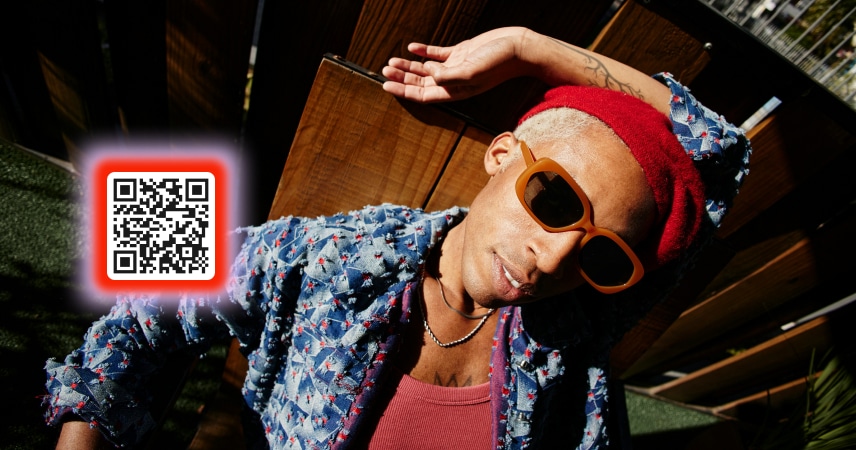
- The year of the French Revolution. For those who don’t remember their history lessons, King Louis XIV and his wife Marie Antoinette were dethroned by mobs of peasants and then guillotined. The country was thrown into chaos for a period of time. That chaos was a period of anarchy – a time of no rule of law and the absence of a governmental structure with those necessary rules.
So, how does anarchy translate to relationships? It’s complicated, but in general, relationship anarchy is a rejection of the labels, rules, and restrictions that society wants to put on relationships. Relationship anarchists simply reject the normalized concepts that everyone’s relationships exist in a type of hierarchy, some most important, some important, some less important, and some least important.
The Nine Principles of Relationship Anarchy
The term was first coined in 2012 by Andie Nordgren in her publication Relationship Anarchy Manifesto. In it, she listed and explained nine principles of core values shared by most relationship anarchists. While they may be a bit tough to grasp, when they are translated into actual practice, they are easier to understand. And that practical application has been the subject of much discussion at more than one Contemporary Intimacies Conference at Sigmund Freud University in Vienna.
1. Love is Abundant, and Every Relationship is Unique
People can feel love of many types, and there is no need to label, rank, or categorize the love relationships that a person has. So, the love between a parent and a child or between those parents doesn’t have to be “ranked” as one being more important or greater than the other.
2. Love and Respect Rule, rather than Entitlement
No one is entitled to a greater love than another. These are the built-in prescriptions of social norms and oppressive systems of traditional society. The idea that one person can have expectations of having all of their love needs and desires met at the expense of other loved ones has been imposed by antiquated models of love and relationships.
3. Each Person Must Find Their Core Set of Relationship Values
Every individual is unique and must find their own value set for relationships. Once they do find them, they should apply them to all of their relationships across the board. For example, if one key value is to spend equal amounts of time with each relationship across the board, then that is what they must commit to. So, they spend the same amount of time in an amorous relationship as they do with their closest friends.
4. Hetero Romantic Relationships are a Norm Imposed by Our Culture
A key value of relationship anarchy is that everyone has the right to love who they choose to love in whatever form they choose to love, and they should not let fear lead them into relationships that do not feel right.
5. “Build for the Lovely Unexpected.”
Relationship anarchy (RA) is a relationship system that is led by the heart. It should be focused on personal needs and desires as the develop and evolve. Expect to be presented with the unexpected at any time – it may change your needs and desires.
6. “Fake it Until You Make It”
According to Nordgren, RA is not something you can just jump into. It will take time to get your bearings and incorporate the several core values that you adopt as your own. They may be platonic or amorous connections that you choose from the relationship anarchy smorgasbord, but they are all up to you. Find support from other RA supporters as you go through this journey.
7. Trust is Paramount
Rather than seek continual validation in any type of relationship, go with the flow, and trust that flow as long as your needs are being met. You and that relationship partner owe no more than that to each other. When the flow doesn’t feel right, move on with not judgement and no regrets.
8. Communication – It’s What Makes RA Happen
Check any sociological research online. You’ll discover that people involved in successful and meaningful relationships talk openly, clearly, and often. How someone may feel is key to the anarchist library of behaviors.
9. Commitments Must be Customized
RA is not about not making commitments to others. It is all about choosing the commitments – to family members, to friends, to co-workers, to romantic relationships – that are right and meaningful for an individual’s own social norms, needs, and desires, not those of the larger society.
Looking at the Benefits of RA
Probably the most important overriding principle of RA is individual empowerment to choose the relationships and the relationship style they want based on their needs and wants and the people involved, not the mandates of a culture. The only limiting idea is that the choices must include open communication, consent of the other parties, and mutual respect. That said, consider some of these benefits:
No Upfront Rules that Define a Relationship
This is an important tenet of RA. Relationships are fluid and evolve as they develop, according to circumstances and the needs of the people involved. Let’s just take a non-amorous relationship as an example. A hetero couple has a child. For four years, the life of that child revolves around their relationship with their parents, perhaps grandparents, and other family relatives. A new baby arrives into this dynamic. Life changes for the four-year old boy. He may feel jealous; he may feel neglected as time is spent with this newborn. Here is when communication must come into play. The parents don’t love him any less, and they do not love the newborn less than him. They must demonstrate that a new entry into the family dynamic does not necessarily set up any hierarchy of relationships – in fact, in an RA “world,” it won’t. Communicating equality of relationships to this lad will be critical.
Each Individual Defines their Relationship
It’s called autonomy. An RA philosophy is that each individual is allowed to define their own relationships according to their needs and values. Whether those relationships are with friends, co-workers, lovers, or family members, the dynamics are based upon individual choices and boundaries. And when these no longer match between and among individuals, they communicate openly and honestly and make changes or end the relationship.
Relationship Anarchy Honors All Relationship Types
Everyone has a smorgasbord of relationships. In fact, there is a relationship anarchy smorgasbord if you are interested in exploring them all in detail. Most of us don’t realize how many relationships we are actually in, and most tend to focus on the limited resource of relationships that social norms define.
RA opens up all relationship types – friends, romantic partners, neighbors, co-workers, family members, social, financial, caregiver, and more. The beauty in all of these is that no one of them is of greater importance than the other. After all, each satisfies specific needs.
The other beauty in this philosophy is that all relationships are fluid – they change as needs and desires do and may consistently evolve. The only “rule” is that communication remains honest and open.
The Paths of Relationships are Open-Ended
Our culture tends to push relationships onto predetermined paths as we go through life. Friends are supposed to play certain roles; chosen family members are as well. Partnerships are supposed to journey toward some type of permanence – living together, getting married, and so on. RA connections do not have to have an end game.
Personal Accountability
People who have chosen RA as a way of life must understand that, in doing so, they also embrace personal responsibility and hold themselves accountable for their behaviors. This goes ways beyond open communication. It means respect for the needs and desires of others and their autonomy, no matter the age, gender, or orientation. Letting go is just as important as making connections. And embracing personal responsibility in all of life’s circumstances is a sign of emotional maturity.
Now that you have a pretty solid intro into relationship anarchy, there are some other important details about this lifestyle that need explanation.
Relationship Anarchy and Polyamory
Polyamory is a large umbrella term for those who have multiple connections and partnerships, usually amorous or physical, with others. While RA may fit under this huge umbrella, there are differences.
Polyamory is an ethical non-monogamy in which all partners are aware of and have agreed to non-monogamy. But this does not exclude hierarchy in relationships. Rather, in many polyamorous partnerships, there is a primary partnership, and the others are secondary.
Usually, in polyamorous situations, expectations and boundaries are set up front. RA situations do not. The expectations and boundaries evolve as the needs and desires of every single person involved evolve. The idea of setting “rules” for a relationship is not considered.
Polyamory is pretty much confined to romantic and physical intimacy. It generally does not include relationships among family members and platonic friends.
Speaking Of Monogamous or Non-Monogamous Lifestyles
RA does not put people into “boxes” of being monogamous or non-monogamous. A married couple has their own relationship and relationships with many others in their lives – offspring, other family members, friends, co-workers, and more. Monogamy or non-monogamy isn’t a factor here.
At the same time, that married couple may engage in non-monogamous activities too. The idea of each relationship being unique and valuable does not change. Each is necessarily valuable for its uniqueness.
This concept may be difficult for many to grasp or to accept. A partner who cannot accept this is clearly not a candidate for RA. The idea of no relationship hierarchy is just not in their playbook. They want dibs at being top in the relationship hierarchy, and RA rejects those norms.
Let’s take a look at relationship anarchy in action.
How Does a Relationship Anarchist Operate?
First of all, it’s important to remember that there are guidelines in RA. They just don’t conform to those of a person who believes in hierarchal structures with their own partner and others. Here’s how you can make your relationships with more than one person all equal and valuable.
Every Relationship Must be Customized
Freedom is the operative word here. You are free to set up any relationship you want, but you should have an idea of what type of relationship will meet your needs and desires. If you don’t, you can become immersed in relationships that will not be right. Identify these things:
- What do you need from the relationship?
- What are your non-negotiables and relationship parameters?
- How do you define commitment for yourself and for others?
Make Sure Communication is Clear
Communication also involves consent, if the relationship is between adults. And obviously, the communication will vary by type of relationship. For example, you will not have the same discussion about needs with coworkers or friends as you have with a partner with whom you intend to have a romantic connection.
Both of you must lay out the terms of engagement and your mutual expectations. If both agree, you have yourself a relationship and a partner on your terms, not anyone else’s.
The Types or Relationships that Relationship Anarchy Supports
We mentioned earlier the smorgasbord of relationships that anyone may want as a relationship anarchist. Here is a list to consider as you look for the types you might want:
- Companionship: This would include such things as mutual interest in activities, hobbies, and just conversation.
- Collaboration: This is the type of relationship that you would have with a co-worker or a business partner. Each of you has needs in that collaboration, and you both communicate those and work to mutually meet them.
- Emotional Attachment: This relationship is based on two people providing emotional support to one another, feeling safe exposing their vulnerabilities, and counting on one another during troubled and happy times.
- Physical Intimacy: This may include all types of physical contact, from handholding, dancing, kissing, hugging, and beyond. The partners agree on the types of physical attachment both will enjoy within their respective boundaries.
- Partnership: A partnership may be platonic or romantic, short-term or long-term, with commitment or without. Obviously, there are plenty of options here, but when two people discover that they have mutual needs and desires, and continue to communicate throughout, their relationship will remain intact.
- Caregiving: This may be in a family situation or not. When one individual has a need to be cared for and another has a desire to be a caregiver, the relationship is set up with expectations and boundaries and may evolve as circumstances do.
- Entanglement: This is a partnership, platonic or romantic, in which two (or more) individuals merge their living arrangements, their finances, and other aspects of their lives. This may be marriage, a coupling of convenience or relationships based on mutual non-romantic needs. (Check out a few episodes of “The Golden Girls”). Today, many single parents are coupling out of need without any intimate relationships or emotional intimacy in the mix. These are all examples of relationship anarchy.
- Kink: BDSM coupling usually involves a dominant and a subservient relationship. If both parties agree on their roles and the boundaries, relationship anarchy wins. Again, this relationship may evolve over time, as long as communication remains open, and both agree on any new parameters.
Most people who embrace relationship anarchy begin with certain relationships on their plate. But they enjoy the freedom to add more to that plate as they move through their own growth and development. Life is fluid, and so too are the types of relationships that individuals choose to have. And that’s the beauty of relationship anarchy. It can be ever-evolving.
Let’s Recap
Think of relationship anarchy as an approach to relationships that focused on equality. Individuals have all types of relationships in their lives, and social norms tend to place them in a hierarchy, some being more important than others. The connection of two partners in a marriage is thus more important than a connection with a best friend. And a connection with a best friend is more important than a casual friendship.
Relationship anarchy throws out all of these hierarchies and focuses on needs being met via all types of relationships, no one of them being any more important than the other. Why? Because no single relationship can meet all of someone’s needs and desires. Relationship anarchy provides the freedom to form as many relationships as necessary to have all needs met. Thus, someone may have any number of relationship styles.
Key to relationship anarchy is communication that is open and honest. When this is the overriding “rule,” the needs of each partner continue to be met, and the relationship evolves successfully. And when needs cease to be met, the relationship dissolves, and each partner moves on.
Relationship anarchy is not for everyone. If you believe that it “strikes a chord” with you, identify your needs and desires and begin to develop relationships of mutual benefit with others, keep lines of communication open, connect with other relationship anarchists for discussion and advice, and see where the journey may take you.





